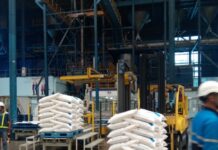When hedging causes doubts
The sugar futures market in NY closed out the week at 19.94 cents per pound for the March/22 contract, 86 points higher against the previous week (about 19 dollars per ton). At the same time, the real recovered against the dollar appreciating 1.9% over the week (closing out at R$5.5400). The combination of the two events caused a drop in sugar value in real per ton for the next crops. The average of the 2022/2023 crop prices (corresponding to May, July and October/2022 and March/2023 contracts) dropped R$21.00 per ton and the 2023/2024 crop shrank 43 real per ton.
The drop in maritime freights because of the Chinese economic slowdown timidly causes the comeback of sugar trading activities. The strengthening of the spreads in NY can be a sign of this movement. The sugar futures contracts in NY with shorter expiration have appreciated a lot more than those with longer ones. The price curve has gotten more inverted. The pace of business needs to gain more strength so that the cash flow of the trading companies goes back to normal and avoids the need for new money. The question is whether the demand will take off or not.
Our last week’s comment about export sugar pricing, in real per ton, along the curve up to two years suggested here as long as accompanied by the purchase of a call with an exercise price 200 points above the market, brought about discussions and reflections on the part of some readers. An experienced mill owner argues that “in a government like ours, if you set a price for two years and face an inflation rate of 10% per year, which in today’s scenario is fairly feasible, is enough to take away all the margin you thought was wonderful at the moment of fixation”.
Of course, there are pros and cons around this debate. It’s true, however, that many decision-makers within the organizations feel more and more discouraged when structures that aim to protect the companies from unfavorable price fluctuations, role which is played by the futures contracts and other derivatives, lose their efficacy due to exogenous factors and, therefore, are beyond the control of the markets, worsened by disastrous economic and fiscal policies.
Look at the critical situation Brazil is in right now. The possible approval of the Constitutional Amendment Bill (PEC) of the court-ordered debt payments (precatórios) is the institutionalization of the default (of the National Treasure) increasing the legal uncertainty and driving away foreign investors who pressure the Brazilian currency when they leave the country. The appreciation of the dollar impacts agricultural inputs, gasoline, diesel, and causes a ripple effect all over the production chain, creating inflation. Then, the Central Bank is obliged to increase interest rates to control the price surge. High interest rates cause an economic downturn and next year’s GDP will be disastrous. MB Associates estimates a tiny 0.4% growth while Itaú Bank projects a 0.5% drop. But, wait – we are in 2021. Next year will be much worse.
In this scenario, the arguments of the despondent mill owner gain opposite strength even for the purchase of a simple put at an exercise price below that of the market, because the exchange of the exercise price in real becomes innocuous if the real devalues even deeper. Along with the mentioned mill owner are all the mills that only fixed the prices in real without buying any hedge above the market.
The paradox of these arguments is to realize that the best hedge is not to hedge at all. That’s a mistake and we won’t fall into this temptation. All hedging structure that hasn’t resulted in the desired outcome for some reason requires a thorough analysis to highlight what went wrong and try to correct the course of things. For example, few mills hedge inputs (one of the most affected costs) that can be done through the exchange of inputs for sugar (barter), and only some do buy options of diesel at the NYMEX. Of course, some OTC suppliers have derivative products for these purposes. We have to think outside the box. Making money and/or preserving margin require constant creativity and is hard work.
Remember that the bad buy when it comes to the detachment of the sugar price in real per ton is the exchange rate. It is a result of the mediocre and nonchalant government with what was set during the election campaign and its Minister of Economy who would bring a huge contribution to the country if he chose, for example, to be a stand-up comedian. The shameful performance of the President at the G-20 meeting, a group of the 20 greatest economies of the planet, flung the abyssal gap between Brazil and its peers wide open. And it reflects the bad mood the country is in for those who intend to invest here.
And numbers never lie. The exchange rate volatility in Lula’s first term was 20% smaller than that seen in the current government, similar to Dilma’s first term, 20.5% below. At least as far as stress goes, this government deserves congratulations.
Back to the market, the mills should start the next crop favoring the production of ethanol. I wouldn’t say maximizing it, because we estimate that 45% of the sugar to be exported during the next crop has already been fixed and will have to be produced. Even those companies that somehow regretted having fixed prices in real per ton when they compare them to the current prices of the market think that higher ethanol prices at the start of the next crop will compensate for part of what they didn’t make off of sugar. Ethanol will work – from the point of view of the mill – as a store of value, while sugar pricing for 2022/2023 slow down. Let’s see how these issues will unfold out over time.
You all enjoy your weekend.
To read the previous episodes of World Sugar Market – Weekly Comment, click here
To get in touch with Mr. Arnaldo, write on arnaldo@archerconsulting.com.br












